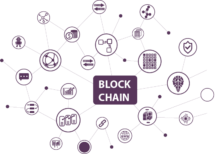Tokenizing Physical Assets
Blockchain all teh things!
While I'm a huge fan of tokenizing digital assets, I'm highly skeptical when it comes to the viability of tokenizing physical assets. The subject comes up in the context of real estate, creative works and more. However I find that the assumptions are not well thought out and I don't believe this is a practical approach to take.
Four proposed solutions to this issue, specific to the context of creative works, from Theo Goodman's Medium post are:
- Use a verifier
- Use a platform to release your artwork
- Public announcement
- Use an OpenDime
Let me start with the last one. This solution is the only one that works in my estimation. A solid chain of custody for said work is established from artist to purchaser. To make it work for resale, another OpenDime will need to be used, making frequent resale cumbersome.
Public announcement is a good approach, but cannot avoid certain attack scenarios. Simply having a louder voice online would enable an attacker to drown out the artist long enough for fraud to occur. They might even hijack the artist's social media accounts to effectively silence the artist who normally makes announcements using these platforms, leaving the artist just one email account compromise away from having a serious problem.
Use a verifier is the first proposed solution. Using a trusted 3rd party is the status quo at auction houses like Christie's, but if we're going to rely upon a trusted real world authority why do we need to use blockchain?
Finally there is the proposed solution of using a platform to release artwork. This is easily the most troubling of them all, but also the most widely used strategy it seems. At least the current crop of platforms, which are all Ethereum-based to my knowledge, are entirely inadequate for physical works for a few reasons. Here are 3:
- Ethereum apps are almost always reliant on Infura, a single point of failure, since it's damn near impossible to keep a node in sync for a startup.The massive bloat which became a substantial obstacle this year means node operators find it challenging to keep their nodes in sync. This will get far worse still if a "killer app" is found fro Ethereum smart contracts. I know devs of a couple Ethereum-based games who cite this as their primary concern with the platform.
- The smart contract technology in Ethereum is highly suspect. Most are coded in Solidity, which has yet to be really tested. Despite the numerous hacks for hundreds of millions of dollars and scores of smart contract auditing startups, attackers have in fact been exploiting errors in coding logic. They have not yet even bothered to attack the compiler; there's too much low hanging fruit already. These are not secure, and there are no real signs that's changing anytime soon in spite of numerous efforts.
- ERC721, the unique token standard of choice for most artists, is more complex than ERC20 tokens, and give attackes more opportunities to act in a malicious manner. This is not simply a case of protecting against an adversary calling a token transfer function to take ownership of the tokens, which has plagued so many ERC20s. This actually opens up new possibilities for unintended modification of data associated with tokens as well.
Posted from my blog with SteemPress : https://chainwars.one/tokenizing-physical-assets/
